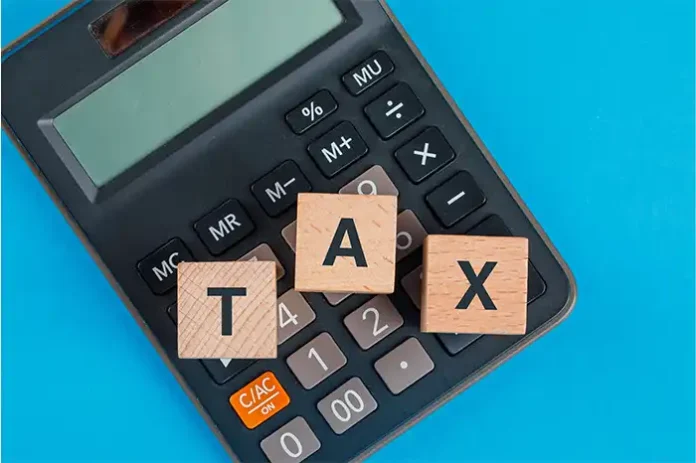In an era where financial stability can seem like a distant dream for many, understanding the options available for managing and mitigating tax liabilities is more crucial than ever. Among the myriad solutions offered by the IRS, the Offer in Compromise (OIC) program stands out as a beacon for those overwhelmed by outstanding tax debts. This program allows qualifying taxpayers to settle their debts for less than the total amount owed, providing a path to financial recovery and peace of mind. One such pathway is the government tax relief initiatives, including the OIC, designed to aid taxpayers in distress.
IRS Offer in Compromise: A Step-by-Step Guide to Understanding the Process

Establishing Eligibility for an Offer in Compromise
The Offer in Compromise (OIC) program is not only a way to settle tax debts in a friendly manner; for many who are experiencing the worst tax delinquencies, it plays an important role that gives them the last opportunity to finally lift their heads up and expect a bright future. To make use of the program, a taxpayer must first make a case of far paying the total amount of tax concerned taxpayer, there are doubts as to whether there is the accuracy of tax liability or collection. This justifies that the debt should not be construed as being simply liquidated or collected in one go given that the circumstances make it complex.
Financial Review by the IRS
IRS puts stringent testing of each application to the accidental assignment of tax relief to those, who fail to undo the tax payment due to an unsustained impoverishment. This review is done through a comprehensive evaluation of a taxpayer’s complete financial profile such as how much one earns, monthly expenditures, equity worth of all assets they own, and an overall analysis of their financial strength. The goal here is to determine if the taxpayer has actually the legal right to acquire or on the contrary, live by their income without being overly affected negatively.
Determining Taxpayer’s Financial Capacity
During this review, the IRS seeks harmony and attention to detail in how the income numbers submitted match. Its process is broader. It doesn’t only cover the current level of income, but it also considers the financial prospects in terms of increased sources of income which may be realized in the future. Additionally, the tax office includes the total equity the taxpayer has in their assets which are checking and savings account deposits, real property, vehicles, and any other forms of property that could be used by the taxpayer in offsetting the amount that is owed.
Obtaining this in-depth financial data is the IRS’s primary objective; it attempts to strike the right balance between recovering as much tax revenue as possible and recognizing and responding to genuinely deserving cases of financial hardship.
The OIC takes the taxpayers through a system that is purposed for or designed to settle their debts and let them live their life again which is no longer burdened with the issues of having debts and gives them a slate to start anew this time without debts. There should be a good reason to believe in the truthfulness of the taxpayers through the IRS-led audit process. Also, it will affirm the IRS’s commitment to fairness by only holding taxpayers accountable for what they can pay based on their reasonable cost of living.
Also Read: States with No Income Tax and No Sales Tax
Eligibility Criteria for an Offer in Compromise

The first step is determining if you can benefit from an OIC, which involves looking into your financial circumstances to compare it with the requirements of the IRS. Quantifying the debt is a consequential step in this direction. Proving that the offered sum represents the most that the IRS can collect within a reasonable time frame is the key to this step. Here are the general conditions you must meet:
- Compliance with Tax Laws: Before pursuing the installment agreement, make sure that all returns due have been filed and all required estimated payments have been posted. If you experience bankruptcy, you cannot conduct business in a formal way.
- Verification of Ability to Pay: The IRS will receive your financial statements and review them closely to ensure that you are unable to pay the remaining liabilities in full. This implies an in-depth analysis of your income versus expenses, assets (worth), and debt.
- Reasonable Collection Potential (RCP): The IRS considers the RCP to evaluate whether the consent you are trying to get is reasonable. RCP refers to the amount your assets can be translated to—such as real estate, vehicles, bank accounts, and other property—plus your assumed income, but it deducts amounts that are allowed as necessities.
It is vital that the candidates receive a thorough education of the conditions for selection and also how to fit into the requirements. It is a detail-oriented process of keeping financial documents and analyzing the current financial circumstances for successful planning.
Also Read: When are Taxes Due
How to Apply for an Offer in Compromise
Filing a motion to set aside the judgment is a complicated and meticulous process. It entails filing the IRS Form 656, the Offer in Compromise, which includes necessary documentation, application fees, and all required fees. You also need to file Form 433-A (OIC) (individuals) or Form 433-B (OIC) (company), which provides the IRS Office of Appeals with details about your financial status.
Realizing the need for professional expertise and guidance offered by a tax consultant, who can give you valuable information and assistance when you need it most, is essential. A tax advisor can check that all forms are filled in correctly and that the refund is in agreement with what the tax declaration will be accepted by.
Conclusion
Getting an Offer in Compromise brings in the prospect of relieving one from a nose-diving tax debt pressure. Filing an extension is often a client’s best choice for it represents an opportunity to start fresh and at the same time it shows the government’s mindfulness of the fiscal situation of the taxpayers. Nevertheless, the OIC is somehow complicated and too strict in qualification hence the need to understand the program procedures and good planning in discussing your financial status.
Managing the complexity of IRS policies is a tough task to accomplish, but armed with the right information and Ready for the job, you can get a positive result. Consult with a tax expert in case you feel you would qualify for this program because it is a complicated process, but it can help you, in the end, to revive your financial standing. Getting to the end of tax relief is like going through a complicated safety project but with perseverance and the right help it can be a route to a more settled future financially.





